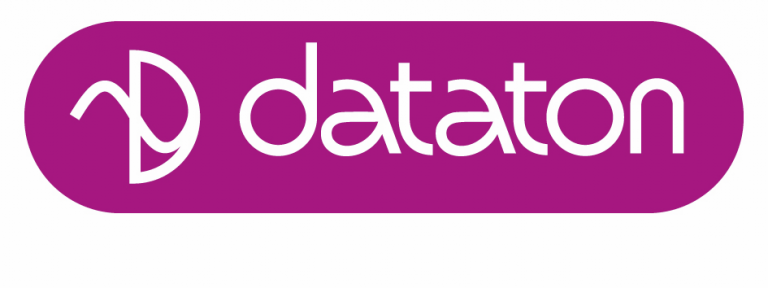
A Dataton Academy certified trainer with a background in theater technology, Ian Johnson has seen both sides of technical support, asking the questions as well as advising others. In this blog, he shares his three key strategies for maximizing tech support time and quality. Read on!
As the AV and staging industries continue to feel the effects of the pandemic, many of us have unexpected time on our hands. At this juncture, we can set ourselves up for bigger, better, and more customized experiences for our customers. Which means, further down the line, that you will be in a position where help is needed. Maybe something doesn’t behave as expected, or there’s a failure, or you are unsure of the next step to take. A call or e-mail to tech support will be sent. However, tech support sometimes moves slower than both parties hope. There can be issues with an uncommon language, information gathering, and a variety of other obstacles with, often, remote support.
So how can we maximize tech support? Coming from the theater where technical issues happen at 2 AM, options for help are limited. Learning to make the most of the time I could receive support was crucial. Based on that experience – and being at the other end of the tech support line – I have three main strategies: familiarity, self-teaching, managing expectations.
These three broad categories encompass many facets of our jobs. Developing each category allowed me to deliver great experiences and reduce stress for myself/ my team. When presented with an upcoming project I always ask myself one question, “Just how familiar am I with X?”
Being less familiar with a UI, workflow, piece of hardware, or anything “new” slows work down considerably. Many manufactures include a quick start or users’ manual. It’s not always thrilling reading but, it is the number one place to start! Frequently the manual is a PDF or other document format you can download to your phone, tablet, or e-reader. This allows you to read through the manual at more convenient times. More importantly, going through the users’ manual allows you to formulate questions on topics that need further explanation.
Fortunately, manufacturers have a variety of resources you can access to answer these questions. There are tutorial videos, FAQs, user forums, and /or more thorough breakdowns if the topic is higher level. Many manufacturers or software developers provide free-to-use versions of products for you to learn on. These versions may be watermarked or limited in some capacity (the free download of WATCHOUT is the full version but requires license keys when you want to start using display servers). Their true purpose is for you to become more familiar with the system, not produce an entire show. This increases your familiarity so you know where to find certain features, have a grasp of the terminology, and can pinpoint those areas you need to consolidate.
How does familiarity maximize the tech support you receive? Simple, it allows you to share a common language with the person on the other end of the call or email.
You will reduce time and stress levels when both parties communicate effectively. It allows you to identify and do some basic troubleshooting on your own, leaving support for the (hopefully) one or two items that are simply beyond your current level of expertise. Lastly, when you do contact the tech support team, you have already created a space in your memory for long term storage. Keep a pad of paper nearby so that you can write notes down or print out e-mail instructions to help you in the future!
This increases the speed and ease in which you can get support. A thorough explanation allows the support person to understand your issue(s), train of thought, and troubleshooting you have already done. They will be able to spend less time gathering information and provide the solution significantly faster! One way or another you will be doing the work. Overall, you will be done much sooner and feel less exhausted.
We now need a way to retain and train all this new info. Self-teaching is a cost-effective way to build on this base level of familiarity. While performing the previously discussed methods, using tutorial materials allows you to “play along at home”.
This low-pressure, high-reward method can be done at your own pace. Becoming more comfortable in the environment makes it easier to use forums to augment your learning. You will be more equipped to search for answers to questions or post intelligent questions. You may also be able to find creative solutions to a problem and reduce the need for “live support”. Being able to handle basic trouble shooting means more time for polishing or adding features to the project(s). Unfortunately, self-teaching can only take you so far.
At this point, you are set up to gain significantly more value for your time and money attending a formal training course. You will be able to practice more advanced techniques and evaluate different workflow options to fit your style. In comparison to someone that walks into a class without having done any self-teaching, you will be confident using your skills right away. Your documentation skills for the project will also be better. This will allow for a complete picture to easily be given to support, a client, or a coworker that needs to understand the system. It also means more accurate expectation management.
Expectations is a loaded word! As a society we like to hear promises. We get them from our children, our politicians, advertisements, even our own brains. How often do those promises pan out exactly?
Take a moment and think about it. Becoming better equipped to evaluate the complexity of a situation or statement, adjusts your expectations efficiently. For you and clients, setting more realistic expectations, costs, timing, etc. allows for a buffer. It also creates an understanding that there are limitations to tech support. Attempting to triage or reprogram someone else’s show over the phone or through e-mail is extremely difficult when complexity is relatively low! Sending out a general call for help with, “It doesn’t work! Help ME!” garners you a general set of questions. If, however, you can manage expectations with more detailed accounts of a specific problem it will reduce the number of fill-in questions. Leading everyone involved to a faster resolution.
Tech support is a two-way street between the helper and the helped. The more basic knowledge on a given topic is directly proportional to the returns on help received. Reduced frustration, less time lost, and more time for other duties are all boons from doing a little leg work beforehand. It is something to consider, and will need to be adapted for the individual but, overall, it never hurts to ask yourself, “Just how familiar am I with this?”

Also by News & Views by Dataton:
VJ Spetto: Audiovisual Artist Speaks on Life in Lockdown
2020: State of the AV Industry.. then Coronavirus


The News&Views blog is created by Dataton, and is about multi-display software and surrounding technologies, media servers, content creation - basically anything within the AV industry that serves to enrich the audience experience! Dataton has provided outstanding products to the audiovisual industry for over 40 years and is the maker of the WATCHOUT production and playback system. WATCHOUT systems are used globally in performing arts venues for scenic projection – in theatre, dance, and musical performances. We first started publishing News&Views, with content reflecting the world of multimedia communication, back in the 80s!
Read Full Profile© 2021 TheatreArtLife. All rights reserved.

Thank you so much for reading, but you have now reached your free article limit for this month.
Our contributors are currently writing more articles for you to enjoy.
To keep reading, all you have to do is become a subscriber and then you can read unlimited articles anytime.
Your investment will help us continue to ignite connections across the globe in live entertainment and build this community for industry professionals.